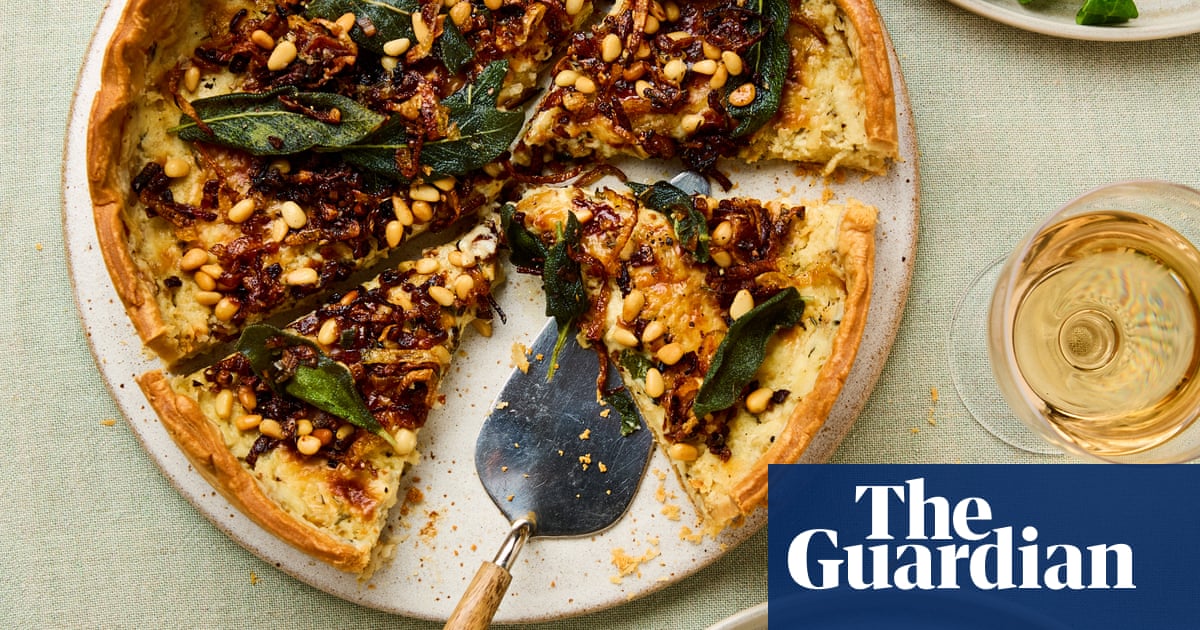Imagine a cheeseboard in a tart, but one you can have as a main course rather than having to wait for pudding: that’s the brief I set for myself when I was thinking about today’s recipe. First, I needed an excellent cheese, which is where the sweet, tangy dolcelatte comes in. Then something crisp and flaky to eat it with – the pastry. And then something nutty, jammy and herby to break up the richness, hence the caramelised shallots and pine nuts. Serve with a sharp, vinegary and fruity salad for the full monty.
You’ll need a 23cm springform tin and baking beans (if you don’t have the latter, use rice or lentils instead). I like to serve this with a pear and mixed-leaf salad dressed with sharp cider vinegar and honey.
Prep10 minCook1 hr 10 minServes4-6
320g ready-rolled shortcrust pastryExtra-virgin olive oil400g banana shallots, peeled, halved and thinly sliced6 garlic cloves, peeled and minced8 fresh thyme sprigs, leaves picked300g dolcelatte150g full-fat cream cheese100ml full-fat creme fraicheFine sea salt and black pepper1½ tbsp pine nuts14 sage leaves
Heat the oven to 190C (170C fan)/375F/gas 5. Lay the pastry in the 23cm tart tin and use your fingertips to press it into the base, making sure you push it right into the corners and up the sides. Cut off any excess pastry and use to fill any gaps. Trim around the top, then take a sheet of baking paper big enough to cover the pastry, scrunch it up, then unfurl and place in the centre. Fill with baking beans, then bake for 15 minutes. Lift out the paper and beans, bake again for 10 minutes, until golden, then take out of the oven and leave to cool.
Meanwhile, put five tablespoons of oil in a large frying pan on a medium heat, then saute the shallots, garlic and thyme leaves for 15 minutes, until browning and starting to caramelise in places. Carefully drain the oil into a heatproof bowl, then stir in two tablespoons of the sauteed shallot mix.
Transfer the rest of the shallots to a large bowl, stir in the cheeses, creme fraiche, a big pinch of ground black pepper and a quarter-teaspoon of salt, and whisk really well until smooth. Pour the cheese mix into the pastry shell, to fill. Evenly smooth out the top, then bake for 45 minutes, until nicely browned on top. Remove and leave to cool for 30 minutes.
Just before serving, make the pine nut and sage topping. Put the reserved oil and shallots in a small frying pan and warm it over a medium heat. When it’s bubbling, stir in the pine nuts, sage leaves and a pinch of salt, and cook until the sage turns a deep emerald green. Pour the mix evenly over the top of the tart, then cut it into four or six even slices and transfer to plates. Serve with a sharp, leafy and fruity salad.
